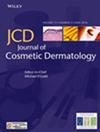Sonoanatomy of the Nasal Ala for Botulinum Neurotoxin Injection
Abstract
Background
The nasal ala region significantly affects facial aesthetics and function. Botulinum toxin injections may enhance nasal appearance, but their precise impact on underlying muscles remains unexplored. Understanding the muscular anatomy and behavior in this area is crucial for optimizing toxin application and achieving desired outcomes.
Objective
This study aimed to ultrasonographically assess and characterize the muscular architecture of the nasal ala region in 32 participants, with the primary objective of delineating the specific muscles involved in nasal aesthetics.
Methods and Materials
This cross-sectional study included 32 participants (15 females and 17 males, aged 20–65) with no history of nasal surgery or botulinum toxin injections in the nasal region. Ultrasonographic evaluation was performed to assess the superficial and deep muscular layers in the nasal ala region, using ultrasonography to visualize the targeted muscles and measure their depth.
Results
Ultrasonographic analysis revealed distinct muscular structures in the nasal ala region among participants. Simultaneous movements of the associated muscles were observed, exhibiting diverse depths.
Conclusion
Ultrasonographic evaluation in our study population elucidated the anatomical nuances of the underlying muscles involved in nasal anatomy. These findings establish a foundation for a more targeted and precise approach in administering botulinum toxin injections, potentially optimizing nasal aesthetics outcomes.


 求助内容:
求助内容: 应助结果提醒方式:
应助结果提醒方式:


